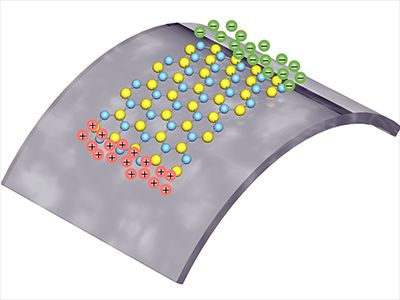Researchers at Columbia Engineering and the Georgia Institute of Technology have reportedly made the first experimental observation of piezoelectricity and the piezotronic effect in an atomically thin material, molybdenum disulfide (MoS2). The piezo effect is traditionally thought of as one property of hard crystalline quartz. Using this new material it would now be possible to manufacture electric generator and mechanosensation devices that are optically transparent, extremely light, flexible and elastic.
“This material—just a single layer of atoms—could be made as a wearable device, perhaps integrated into clothing, to convert energy from your body movement to electricity and power wearable sensors or medical devices, or perhaps supply enough energy to charge your cell phone in your pocket,” says James Hone, professor of mechanical engineering at Columbia and co-leader of the research.
For more detail: Atomically thin Piezo Material

